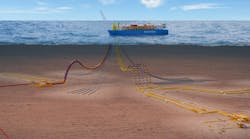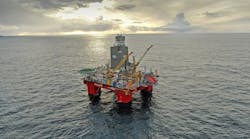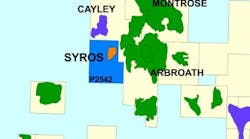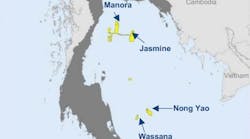The recent drillship and semisubmersible rig building trend has finally migrated to the jackup drilling rig market. The trend of "bigger is better" seems to be catching on in this previously, construction-stagnant market. The rush to compete in deeper waters focused industry attention to "bigger-and-better" drill ships and semisubmersibles (semis), and briefly decreased emphasis on jack-up rig construction.
As this "bigger-and-better" philosophy has waned under skepticism of its cost effectiveness, and with the recent upturn in fuel prices, interest has been rekindled in shelf prospects and jackup drilling rigs to drill them. Two new technical application areas are showing signs of the primary growth areas. They are:
- HP/HT (high pressure/high temperature) capable rigs
- Enhanced productivity
More capable HP/HT rig designs are currently being built to handle those previously difficult-to-drill, harsh environment wells. Enhanced productivity is just now receiving serious attention for the jackup rig market. The most obvious evidence of this trend is the implementation of horizontal, as well as vertical, pipe-handling techniques - equipment and techniques previously used only on larger drillship and semisubmersible rigs.
Pipe handling
Vertical pipe handling (VPH) techniques have been implemented in the jackup rig market for some time now. Smaller versions of the drillship and semisubmersible VPH designs have already been retrofitted into existing jackup rigs. Depending on the rig, issues such as fingerboard modification, iron roughneck selection, and other associated derrick pipe handling equipment choices dominate the re-design process for this functionality.
Horizontal pipe handling (HPH) has not seen much interest from the jackup rig contractors, due to the limited deck space for the required equipment. Single joint HPH systems have been used in a few situations, however, on a few platform and jackup rigs around the world. Boasting hands-free movement of pipe from the deck to the rig floor, these single joint HPH systems offer advantages more along the lines of safety, than in actual time-savings.
Although more hands-free, the handling of single 31-ft and 40-ft joints of pipe and casing still takes a comparable amount of rig time. For some of the smaller jackups in the world drilling fleet, even this great safety benefit does not offset the space limitation of the required equipment.
Without major re-designs of the rig (highly cost and engineering prohibitive), the equipment cannot be used. To date, no bottom supported jackup or mobile offshore drilling unit (MODU) has both of the above extended tubular handling capabilities.
Higher efficiency
More efficient, in lieu of "bigger is better," comes to the rescue. Deeper wells imply more drilling and casing tubulars required for the well construction process. This implies more total weight-holding capacity and larger area for more effective weight distribution. Friede & Goldman, Ltd. recognized the need for more tubular capacity and designed the JU-2000 without taking the "bigger is better" approach. The JU-2000 is a self-elevating drilling unit. Capable of operating in 400 ft water depth, the rig boasts the capability of handling and storing horizontally on the cantilever pipe rack, 100-foot tubulars.
Since the setback of a modern jackup is located off of the center line of the well, the maximum allowable drilling load in a transverse skidding condition is controlled by the amount of setback in the drill floor. If this were to be reduced, a higher hook or rotary load could be achieved.
Handling and storing tubulars of this length offers several operational advantages.






